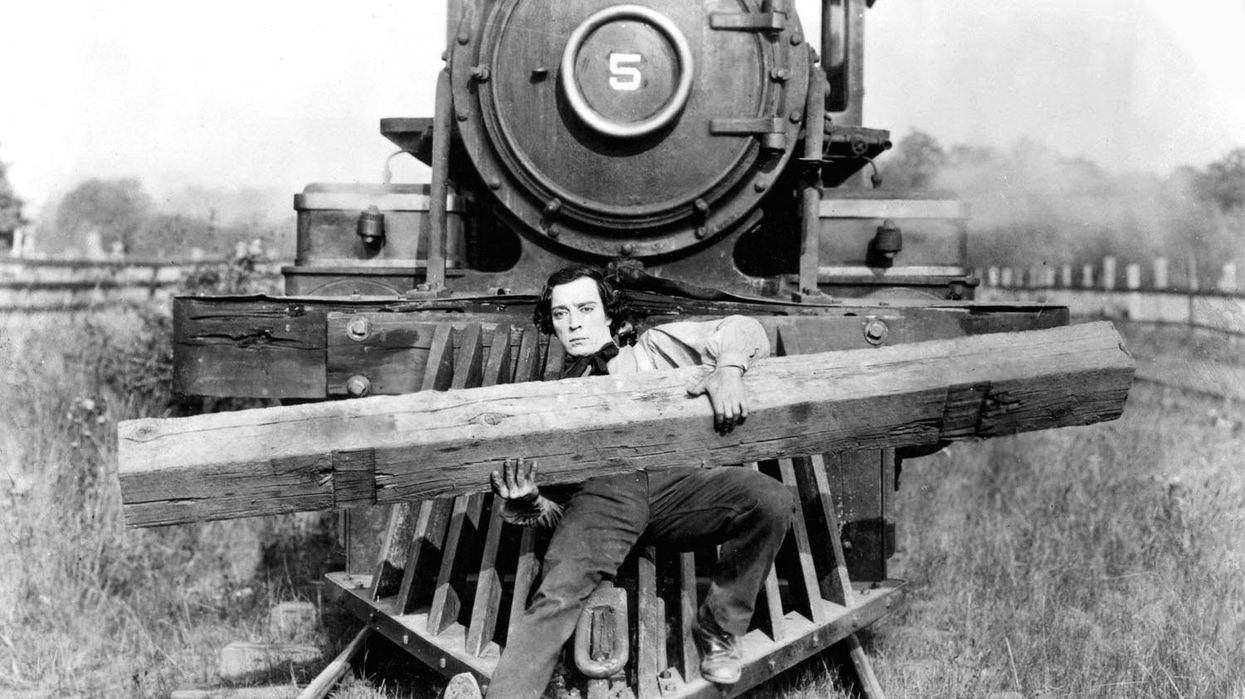Inside the Art of Buster Keaton, Silent Cinema's Undisputed King of Visual Comedy
Silent film may or may not be your thing, but the work Buster Keaton demands to be seen, studied, and marveled at for its ingenuity.

Not only has Keaton influenced many of the world's greatest filmmakers, but some of his techniques continue to be innovative and visually stunning to this day. In a new Tony Zhou video, the master video-essayist breaks down how Keaton pioneered the art of visual storytelling, physical comedy, and framing shots for comedic effect. He also shows some great examples of how Keaton has directly influenced the work of Wes Anderson and Jackie Chan. Check it out:
There's a combination of things that makes Keaton's comedy so incredibly impressive, even by modern standards. First is the sheer inventiveness of his physical comedy. While some of his gags have been replicated and paid homage to many times — the wall falling on someone is the best-known example — others have never been recreated, and probably never will.
Second, the fact that Keaton abhorred fakery meant that he approached shooting these scenes in the most practical and straightforward way imaginable. He did his own stunts, and let them play out in single takes with wide framings that allowed the audience to see that nothing shady was happening.
Lastly, here's another of Zhou's video essays that shows how Jackie Chan approached mixing action and comedy. After watching the Keaton video, it's clear that Jackie's signature style (at least in his earlier Hong Kong films) borrows heavily from Keaton's principles of visual comedy, yet is mixed with the history and philosophy of martial arts cinema in order to create something totally unique. It's a fantastic example of how we can borrow from the past, mix it with other influences and our own perspectives, and come up with something that feels fresh and exciting.
Source: Every Frame A Painting

 No Film School's coverage of
No Film School's coverage of 









